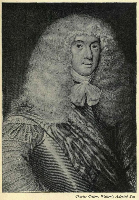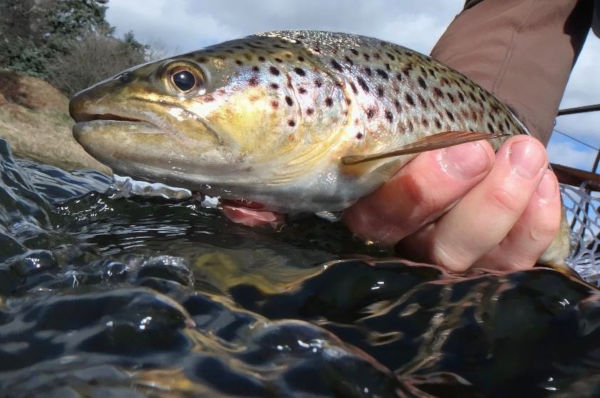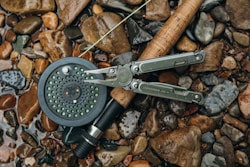
Scottish Connections to Modern-Day Fly Fishing Techniques
Scotland has long been regarded as a haven for fly fishing enthusiasts, with its rich history and deep-rooted traditions in the sport. From the misty lochs to the rushing rivers, Scottish fly fishing techniques have influenced and shaped the modern practices we see today. In this article, we delve into the fascinating connections between Scotland and contemporary fly fishing techniques. We explore the evolution of fly fishing techniques in Scotland, the profound influence of Scottish innovations on global practices, notable Scottish contributions to fly fishing equipment, the impact of Scottish anglers on the sport, conservation and sustainability efforts, current challenges, and future trends. Join us on this journey to uncover the enduring legacy of Scottish connections to modern-day fly fishing techniques.
Scottish Connections to Modern-Day Fly Fishing Techniques
Early Origins of Fly Fishing in Scotland
When it comes to fly fishing, Scotland is like the wise old grandparent who knows all the secrets. The art of fly fishing has deep roots in Scottish tradition, dating back centuries. With its abundant rivers, lakes, and rugged landscapes, Scotland provided the perfect backdrop for this angling pursuit to flourish.
Key Characteristics of Scottish Fly Fishing
Picture a serene Scottish river, mist rolling over the water, and an angler casting their line with precision. Scottish fly fishing is known for its elegant and graceful style. The emphasis is on finesse, delicacy, and realistically presenting the fly to tempt the fish. The Scottish approach values technique over brute force, aiming for a dance between angler and fish rather than a wrestling match.
Evolution of Fly Fishing Techniques in Scotland
Traditional Scottish Fly Casting Techniques
Scottish fly casting techniques have evolved, adapting to the unique conditions found in the country's rivers and lochs. The "Spey cast" is perhaps the most famous Scottish contribution to fly fishing. Named after the River Spey, this technique involves an elegant, sweeping motion that allows anglers to cover vast stretches of water with minimal effort. It's a bit like conducting an orchestra, except the audience is full of fish.
Innovations in Scottish Fly-Tying Methods
Scottish fly fishers have always had a knack for tying flies that perfectly imitate the local insect life. Whether it's the iconic Scottish fly patterns like the "Black Pennell" or the "Dunkeld," or more modern creations, Scottish fly tying techniques have pushed the boundaries of artistry and innovation. These patterns have become staples in fly boxes worldwide, fooling fish in every corner of the globe.
Influence of Scottish Fly Fishing Techniques on Modern Practices
Adoption of Scottish Casting Techniques Worldwide
Scottish casting techniques have not stayed confined to the misty rivers of Scotland. Anglers around the world have adopted and adapted these techniques to suit their local conditions. Whether you're casting on the challenging salmon rivers of Canada or the open saltwater flats in the Caribbean, you can bet that a bit of Scottish wisdom has influenced the way anglers handle their rods.
Incorporation of Scottish Fly Patterns in Global Fly Fishing
Scottish fly patterns have also made their way into fly boxes worldwide. The effectiveness of these creations, developed to match the hatches of Scottish waters, has proven their worth across the globe. From trout streams in New Zealand to steelhead rivers in the United States, Scottish fly patterns are trusted by anglers seeking success on their fishing adventures.
Notable Scottish Contributions to Fly Fishing Equipment
Development of Specialized Scottish Fly Rods
When it comes to fly fishing equipment, Scotland has made its mark. Scottish craftsmen have long been revered for their expertise in building fly rods. Specialized rods designed for the unique demands of Scottish fishing, such as the double-handed salmon rods, have become sought-after tools for anglers worldwide. The Scottish touch can be felt in every flick of the wrist and bend of the rod.
Scottish Innovations in Fly Lines and Reels
Scottish inventors have also played a pivotal role in advancing fly lines and reels. From the development of modern floating lines to the introduction of innovative reel designs, Scottish ingenuity has helped anglers cast farther, control their drifts, and reel in their prized catches with ease. These innovations continue to shape the way fly fishers tackle their favourite waters.
Scottish fly fishing traditions have left an indelible mark on the sport. From its humble beginnings to its influence on modern practices and equipment, Scotland's connections to fly fishing techniques are undeniable. So next time you're out on the water, take a moment to appreciate the legacy of Scottish fly fishing and maybe even try out a few of their time-honoured techniques. After all, you might just find yourself in the company of some fishy friends.
Scottish Anglers and Their Impact on Modern Fly Fishing
When it comes to fly fishing, Scotland has a rich and storied history. Scottish anglers have made significant contributions to the sport, shaping the techniques and practices that are still used today. Their expertise and innovation have had a lasting impact on fly fishing worldwide.
Legendary Scottish Fly Fishers and their Techniques



Scotland has produced some legendary fly fishers whose techniques have become iconic in the sport. Names like Charles Cotton, Hugh Falkus, and the godfather of modern fly fishing himself, Charles Ritz, all hail from the Scottish tradition. These anglers developed innovative casting techniques and fly patterns that are still revered and emulated by fly fishers around the globe.
One notable Scottish technique is the use of the "Spey cast," named after the River Spey in Scotland. This casting method involves a long, sweeping motion that allows for the effective use of long, two-handed rods. The Spey cast has revolutionized the sport, enabling anglers to cover large stretches of water with ease and precision.
Influence of Scottish Anglers on Conservation Efforts
Scottish fly fishers have also been at the forefront of conservation efforts. Recognizing the importance of protecting native fish species and their habitats, Scottish anglers have been instrumental in implementing measures to ensure the sustainability of fly fishing.
Through organizations like the Atlantic Salmon Trust and the Wild Trout Trust, Scottish anglers have actively contributed to the restoration and conservation of fish populations and their habitats. Their efforts have helped raise awareness about the fragile ecosystems that support these fish and the importance of responsible angling practices to preserve them for future generations.

Conservation and Sustainability in Scottish Fly Fishing
Scottish fly fishing has long been committed to conservation and sustainability. Anglers in Scotland have developed practices and initiatives that prioritize the protection of native fish species and promote sustainable fishing practices.
Scottish Practices for Protecting Native Fish Species
In Scotland, there are strict regulations in place to protect native fish species such as Atlantic salmon and brown trout. These regulations include catch limits, size restrictions, and specific fishing seasons to prevent overfishing and ensure the sustainability of fish populations.
Furthermore, some Scottish rivers have implemented "catch and release" policies, where anglers are encouraged to release their catch unharmed. This practice helps conserve fish stocks by allowing them to spawn and contribute to future generations.
Sustainable Catch-and-Release Initiatives in Scotland
Scottish fly fishing also embraces sustainable catch-and-release initiatives. Anglers are encouraged to handle fish with care, using methods that minimize stress and increase the chances of survival upon release. This approach not only protects fish populations but also maintains the sport's ethical integrity by promoting responsible angling practices.
Additionally, education and awareness programs are in place to educate anglers about the importance of conservation and sustainable fishing. By fostering a shared understanding and appreciation for the aquatic environment, Scottish fly fishers are actively working towards a future where fish populations thrive.
Current Challenges and Future Trends in Scottish Fly Fishing
While Scottish fly fishing has a strong legacy, it also faces challenges and is evolving in response to environmental factors and technological advancements.
Environmental Factors Affecting Scottish Fly Fishing
Climate change and its impact on rivers and fish habitats pose a significant challenge to Scottish fly fishing. Rising water temperatures and altered river conditions can affect fish behaviour, migration patterns, and overall ecosystem health. Scottish fly fishers are adapting their techniques and practices to account for these changes and ensure the preservation of fish populations.
Technological Advancements Shaping the Future of Scottish Fly Fishing
Technological advancements continue to shape the future of Scottish fly fishing. From advanced fly rods and reels to innovative fly patterns and materials, technology plays a crucial role in enhancing anglers' experience and improving their success on the water. Scottish fly fishers are quick to embrace new tools and techniques that push the boundaries of the sport while staying true to its traditional roots.
The Enduring Legacy of Scottish Connections to Modern Fly Fishing Techniques
Scottish fly fishing has left an indelible mark on the sport, with its legendary anglers, innovative techniques, and commitment to conservation. The techniques developed by Scottish fly fishers continue to be revered and emulated worldwide, while their conservation efforts serve as a model for sustainable angling practices.
As the sport evolves, Scottish fly fishing faces both environmental challenges and technological advancements. Yet, with its enduring legacy and a spirit of innovation, Scottish anglers will undoubtedly continue to shape the future of fly fishing, ensuring that this beloved sport remains vibrant and connected to its roots for generations to come.
The Scottish roots of fly fishing run deep, leaving a lasting impact on the sport that is cherished by anglers worldwide. From the early origins of fly fishing in Scotland to the innovations in casting techniques and fly patterns, Scottish traditions have shaped the way we fish today. Scottish anglers and their contributions, as well as their dedication to conservation and sustainability, continue to inspire and guide the future of fly fishing. As we cast our lines into the waters, we honour the enduring legacy of Scottish connections, ensuring that the traditions and techniques developed in Scotland remain an integral part of this beloved sport for generations to come.
Frequently Asked Questions
How have Scottish fly fishing techniques influenced modern practices?
Scottish fly fishing techniques have had a significant impact on modern practices. The casting techniques and fly patterns developed in Scotland have been adopted worldwide by fly anglers. Scottish innovations in equipment, such as specialized fly rods and advanced fly lines, have also influenced and shaped the tools used in modern fly fishing.
Are there any notable Scottish fly anglers who have made significant contributions?
Scotland has produced several legendary fly anglers who have left a lasting impact on the sport. Notable figures such as Charles Ritz, Hugh Falkus, and Donald Macpherson have not only perfected their techniques but also shared their knowledge through influential books and teachings. Their contributions have inspired countless anglers and furthered the development of fly fishing.
What are the current challenges in Scottish fly fishing?
Scottish fly fishing faces various challenges in the present day. Factors such as environmental changes, habitat degradation, and invasive species pose significant threats to native fish populations. Additionally, the growing popularity of the sport and increased pressure on fisheries call for responsible angling practices and sustainable management approaches to ensure the long-term health of Scottish waters.
What are some famous Scottish fly fishing techniques?
Scottish fly fishing techniques are renowned for their elegance and effectiveness. Traditional Scottish casting techniques like the Spey cast and the Roll cast have gained global recognition. Additionally, Scottish fly anglers have developed unique methods for presenting flies to fish, such as the Loch Style technique and the Dapping technique.


